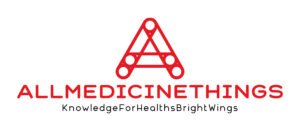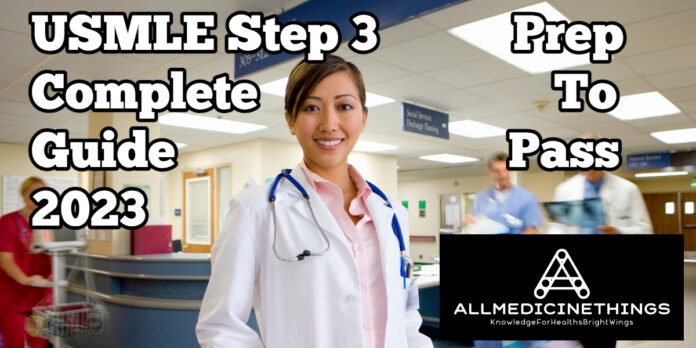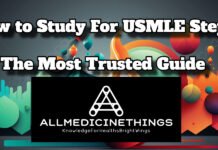Introduction
Overview of USMLE (United States Medical Licensing Examination)
If you’re reading this guide, you’re likely standing at the precipice of one of the most critical milestones in your medical career—the United States Medical Licensing Examination (USMLE) Step 3. Whether you’re a current medical student or a recent graduate, the USMLE Step 3 isn’t merely an examination; it’s the golden key that unlocks your path to practicing medicine in the United States.
The USMLE itself is a trilogy—a series of three exams that progressively assess your capabilities as a would-be physician. The examinations are designed to test your knowledge, skills, and understanding of medical and clinical science. More specifically, these exams aim to ensure that you’re equipped with the necessary competencies to provide safe and effective patient care.
Importance of USMLE Step 3 in Obtaining Medical Licensure
USMLE Step 3 is often deemed the “final frontier” for gaining medical licensure, and for a good reason. While Steps 1 and 2 lay the foundational building blocks, Step 3 evaluates whether you can integrate and apply it all, particularly in an unsupervised setting. In essence, it’s the exam that asks, “Can you, as a physician, make sound judgments about patient care in real-world scenarios?”
Passing USMLE Step 3 is more than a mere checkbox in your medical career; it’s a significant indicator of your readiness to undertake independent medical practice. It’s the exam that says to the world—and more importantly, to yourself—that you are equipped to take on the responsibilities of being a fully licensed physician.
Target Audience: Medical Students and Graduates Planning to Practice in the U.S.
Whether you’re knee-deep in medical textbooks as a student or a recent graduate eager to put your skills into practice, this guide is for you. The path to USMLE Step 3 can be riddled with questions, ambiguities, and uncertainties. It’s not just about the syllabus or the study hours; it’s about understanding what lies ahead, how to prepare for it, and how to succeed in it.
This guide is also an invaluable resource for International Medical Graduates (IMGs) who may need extra guidance navigating the U.S. medical licensure process. Our aim is to offer a structured roadmap that caters to all aspiring physicians, regardless of where you are on your medical journey.
Stay tuned for the subsequent sections, where we will delve deeper into the intricacies of the USMLE Step 3 examination—from registration and study plans to test-taking strategies and what lies beyond the exam. Whether you’re a seasoned exam taker or a nervous first-timer, this guide aims to arm you with the knowledge, resources, and confidence you need to conquer the USMLE Step 3.
Why Take the USMLE Step 3?
As you embark on your journey through medical education, it’s crucial to understand not just the “how” but also the “why” of USMLE Step 3. Knowing what you’re getting into and what you stand to gain can offer invaluable perspective and motivation.
Final Hurdle for Medical Licensure
Let’s start with the most glaring reason: USMLE Step 3 is your final step toward full medical licensure in the United States. While you’ve shown your understanding of medical sciences in Step 1 and your clinical skills in Step 2, Step 3 is where you prove that you’re capable of applying this collective knowledge in a practical, patient-centered manner. Think of it as your rite of passage from a medical trainee to a fully-empowered medical practitioner.
Career Advancements and Specialization
While the importance of USMLE Step 3 for residency programs may not be as pronounced as Steps 1 and 2, it is by no means inconsequential. In fact, some residency programs may have specific Step 3 requirements for senior residents. Furthermore, completing Step 3 opens doors to advanced career prospects, including fellowship opportunities and specialized roles that could be unavailable to you otherwise.
Increasing Credibility and Marketability
In a field as competitive as medicine, you need every advantage you can get. Passing Step 3 not only proves your clinical competence but also makes you a more attractive candidate for hiring. For International Medical Graduates (IMGs), a strong Step 3 score can significantly improve your chances of landing a residency or fellowship program, thereby easing your integration into the U.S. healthcare system.
Prerequisite for Fellowship Programs
As you advance in your medical career, you may wish to specialize further through fellowship programs. Many of these advanced training programs demand a passing Step 3 score as a basic eligibility criterion. By completing Step 3 early in your career, you’re laying the groundwork for a smoother, less stressful path to higher specialization.
Understanding the significant advantages of passing USMLE Step 3 can serve as a strong motivator during your preparation phase. Whether it’s achieving full licensure, gaining an edge in the job market, or facilitating further educational pursuits, Step 3 serves as a crucial juncture that could shape your professional trajectory in meaningful ways.
Pre-requisites for USMLE Step 3
Before you can even think about tackling the intricacies of USMLE Step 3, there are a few mandatory requirements you must meet. Let’s break down these prerequisites to give you a clearer understanding of what lies ahead in your journey toward licensure.
Successful Completion of Step 1 and Step 2 CK and CS
This one is non-negotiable. You need to have passed USMLE Steps 1 and 2 (both Clinical Knowledge (CK) and Clinical Skills (CS)) to be eligible for Step 3. Each of these steps serves as a building block for the next, so they must be completed in sequence. Make sure you have all your scores in order and that you meet the minimum passing standards for each previous step.
Graduation from Medical School
For U.S. medical graduates, you’ll need to provide proof of graduation from a medical school that is accredited by the Liaison Committee on Medical Education (LCME) or the American Osteopathic Association (AOA). International Medical Graduates (IMGs) must be certified by the Educational Commission for Foreign Medical Graduates (ECFMG) to prove their graduation from an approved international medical school.
State-specific Requirements
This is where things can get a bit more complicated. Medical licensure is largely a state affair in the United States, and individual states may have their own set of criteria you must meet before you can take Step 3. For example, some states require a minimum period of postgraduate training, often known as a medical internship or residency, before you can sit for the exam. Others may have additional ethics or jurisprudence exams that are state-specific. Always check the specific requirements of the state medical board in which you intend to apply for licensure.
Meeting the prerequisites for USMLE Step 3 is essentially your ticket to enter the “exam arena.” Neglecting any of these criteria could lead to unwanted delays and potential setbacks in your career timeline. Make sure you have all your educational and professional ducks in a row before diving into the extensive preparation that Step 3 demands. Consider this phase as the foundation on which you will build your successful Step 3 outcome and, consequently, your future medical career.
Preparing for USMLE Step 3: Tips, Study Plans, and Resources
Once you’ve successfully navigated through the prerequisites and decided that you’re mentally and emotionally ready to take on USMLE Step 3, the next step is preparation. This phase can be as straightforward or as complex as you make it, depending on your approach and the resources you utilize.
Creating a Study Plan
Your first priority should be crafting a well-structured study plan that suits your learning style and schedule.
- Timeline: The average recommended preparation time for USMLE Step 3 ranges from 3 to 6 months. Evaluate your daily routine, commitments, and lifestyle to carve out dedicated study hours.
- Subjects: USMLE Step 3 encompasses a broad range of medical topics, from internal medicine and surgery to pediatrics and ethics. Make sure your study plan includes time for each subject, as well as review sessions.
- Flexible Yet Structured: Make room for flexibility in your study plan for unplanned circumstances, but also ensure that it remains structured enough to keep you disciplined.
Essential Study Resources
- Textbooks and Manuals: Books like ‘First Aid for the USMLE Step 3’ and ‘Master the Boards USMLE Step 3’ are invaluable resources for in-depth learning.
- Question Banks: UWorld is an excellent question bank that mimics the style and format of USMLE questions. Use it alongside other question banks to widen your exposure.
- Practice Exams: The National Board of Medical Examiners (NBME) offers practice exams that you can use to gauge your readiness. Take these seriously to identify your weak areas.
Online Courses and Forums
- Courses: Platforms like Kaplan and Doctors In Training offer specialized Step 3 courses that cover the syllabus comprehensively.
- Forums: Websites like Reddit and Student Doctor Network have active communities where you can seek advice, share resources, and gain insights from peers and seniors.
Tips for Effective Studying
- Active Recall: Instead of passively reading, engage with the material by asking yourself questions or explaining concepts aloud.
- Spaced Repetition: Use tools like Anki to revisit and reinforce your memory on important topics.
- Healthy Lifestyle: Never underestimate the power of a balanced diet, sufficient sleep, and regular exercise in enhancing your cognitive function and stress management.
Your preparation phase for the USMLE Step 3 exam will inevitably be filled with long hours, challenges, and moments of self-doubt. However, with a well-laid-out plan, top-notch resources, and a disciplined yet adaptable approach, you can conquer this vital step in your medical career journey. Remember, it’s not just about the study hours you put in, but the efficiency and quality of those hours that will set you up for success.
Taking the USMLE Step 3: What to Expect on Exam Day and Strategies for Success
After months of dedicated preparation, D-Day finally arrives. It’s natural to feel a mix of anxiety and anticipation. Knowing exactly what to expect and how to navigate the experience can give you a significant advantage. Let’s delve into what your USMLE Step 3 exam day(s) will look like and some strategies for success.
Exam Format and Structure
- Computer-based Test: USMLE Step 3 is a two-day computer-based examination.
- Day One (Foundations of Independent Practice): This segment consists of multiple-choice questions that assess your knowledge and understanding of foundational medicine and science.
- Day Two (Advanced Clinical Medicine): This day includes both multiple-choice questions and computer-based case simulations to test your ability to apply medical knowledge in real-life situations.
What to Bring to the Test Center
- Identification: A valid, government-issued photo ID.
- Confirmation Notice: Printout or digital copy of your scheduling permit.
Snacks and Drinks: Though not allowed in the testing room, you can keep these in designated areas for your break time.
Tips for Day 1: Foundations of Independent Practice (FIP)
Day 1 of the USMLE Step 3 exam, known as Foundations of Independent Practice (FIP), is crucial for setting the tone for the entire test. This section primarily focuses on multiple-choice questions (MCQs) that evaluate your understanding of foundational medicine and science. How you perform on this day can significantly influence your confidence and performance on Day 2. Here are some targeted tips to navigate Day 1 successfully.
Efficiently Answering Multiple Choice Questions (MCQs)
- Prioritize Questions: Begin by skimming through the questions briefly to identify those you can answer quickly and accurately. Tackling easier questions first can boost your confidence.
- Elimination Technique: If you’re unsure about the correct answer, try eliminating options that are clearly incorrect. This narrows down your choices and improves your chances of selecting the correct answer.
- Mark and Move: For questions that you find challenging or time-consuming, mark them and move on to the next question. You can always return to these later if time permits.
Time Management During the Test
- Allocating Time: Calculate the time you can afford to spend on each question by dividing the total time by the number of questions. Always keep some buffer time for review.
- Clock-Watching: Keep an eye on the time without becoming overly anxious about it. Some exam centers provide on-screen timers, while in others you might have to depend on a wall clock.
- Mid-Exam Breaks: Utilize your allocated break time wisely. Even a short walk or some stretching can help you recharge and refocus.
Handling Difficult Questions
- Don’t Panic: Encountering a difficult question can be unnerving, but don’t let it shake your confidence. Take a few deep breaths and attempt to approach it logically.
- Break it Down: If a question appears complicated, try to break it down into smaller components. This can often make it easier to understand what the question is asking.
- Educated Guess: In cases where you really can’t decide on the correct answer, make your best-educated guess. Remember, there’s no penalty for wrong answers, so it’s better to guess than leave it blank.
Mastering Day 1 of the USMLE Step 3 exam sets the stage for a successful Day 2. By employing smart strategies for MCQs, managing your time efficiently, and having a game plan for handling difficult questions, you can maximize your performance on this crucial first day of the exam. Remember, the goal is not just to pass but to excel, setting yourself up for a prosperous and rewarding medical career.
Tips for Day 2: Advanced Clinical Medicine (ACM)
Day 2 of the USMLE Step 3 exam, also known as Advanced Clinical Medicine (ACM), can be both exhilarating and daunting. This day assesses your ability to apply medical knowledge and clinical skills in a practical, real-world setting, primarily through multiple-choice questions and Computer-based Case Simulations (CCS). Let’s dive into some key tips and strategies to help you excel on Day 2.
Strategies for Computer-based Case Simulations (CCS)
- Understand the Format: Familiarize yourself with the format of the CCS beforehand. Knowing how to navigate through the software can save you valuable time during the exam.
- Patient Safety First: Always prioritize patient safety when making clinical decisions. Avoid potentially harmful interventions or diagnostic tests unless absolutely necessary.
- Time Management: Each case simulation has its own time limit. Be mindful of the clock and aim to complete critical interventions and decision-making steps within the allotted time.
Time Management Tips
- Segment Your Time: Before you start, mentally divide your time between the multiple-choice questions and the CCS. Make sure you allocate enough time for both.
- Pacing: Keep a steady pace to ensure you answer every question and complete every case. You don’t want to rush through the last few questions or cases, as they are equally important.
- Use Breaks Wisely: Take advantage of the breaks between blocks to refresh your mind and refocus. A brief period of relaxation can boost your performance in subsequent blocks.
Prioritizing Clinical Decision Making
- Follow the Data: Your decisions should be data-driven. Order appropriate diagnostic tests and base your interventions on the results.
- Logical Sequencing: When presented with multiple tasks (e.g., diagnosis, treatment, follow-up), tackle them in a logical and clinically relevant sequence. For instance, stabilize the patient before moving on to diagnostic tests.
- Consult Guidelines: While the exam won’t expect you to memorize all clinical guidelines, having a good understanding of commonly accepted practices and protocols can help you make informed decisions.
Day 2 of the USMLE Step 3 is challenging, but it’s also your chance to demonstrate the skills and knowledge you’ve acquired over years of medical training. By understanding how to tackle the Computer-based Case Simulations, managing your time effectively, and prioritizing your clinical decisions, you’ll be well-prepared to navigate the complexities of the ACM and move one step closer to your medical licensure.
Common Pitfalls to Avoid
- Overthinking: Trust your preparation and make your best educated guess rather than spiraling into overanalysis.
- Skipping Questions: No penalty exists for guessing, so never leave a question blank.
- Neglecting Self-Care: Ensure you take small breaks, stretch, hydrate, and eat a little to keep your energy levels up.
Post-exam and Score Reporting
- Score Reporting: You can typically expect your scores to be reported within three to four weeks after the exam.
- Pass/Fail Outcome: USMLE Step 3 is graded on a pass/fail basis, though achieving a high score can be beneficial in your future medical career.
Your USMLE Step 3 exam days will be among the most critical days of your medical career. But remember, it’s not just a test of knowledge; it’s a test of application, understanding, and judgment. With the right preparation and mindset, these can be the days you look back on as the turning point in your path to becoming a fully licensed medical professional in the United States.
After USMLE Step 3: What’s Next on Your Medical Journey?
Congratulations, you’ve crossed the USMLE Step 3 milestone! But crossing the finish line doesn’t mean the race is over. Let’s explore the post-Step 3 landscape to give you a clearer idea of what awaits you after the exam and how to make the most of your success.
Understanding Your Score Report
- Pass/Fail Status: First and foremost, determine if you’ve passed or failed. A passing score is essential for licensure.
- Score Interpretation: While Step 3 is generally graded on a pass/fail basis, a higher score can make you more competitive in specialized areas.
Obtaining Medical Licensure
- State Medical Board Application: Start by applying to the State Medical Board where you plan to practice.
- Document Submission: Submit all required documents, including your USMLE transcript and proof of medical school graduation.
- Licensure Fees: Be prepared to pay the required licensure fees, which can vary by state.
Planning Your Residency and Beyond
- Complete Residency: If you’re not already in a residency program, securing one is your next step.
- Board Certification: After completing your residency, consider pursuing further specialization through board certification in your chosen field.
- Fellowship Opportunities: If you’re aiming for a super-specialized role, look into relevant fellowship programs.
Career Opportunities and Practice Settings
- Private Practice: You may opt to open your own medical practice, either solo or with partners.
- Hospital Employment: Many physicians prefer the stability and resources offered by working in a hospital setting.
- Academia and Research: If teaching or research excites you, consider a career in academic medicine.
Continuing Medical Education (CME)
- State Requirements: Most states require ongoing education to maintain licensure.
- Specialized Training: Keep an eye out for workshops, seminars, and courses that can advance your specialized skills.
- Networking: Join medical associations and attend conferences to stay updated on the latest in medical science and to network with peers and experts.
Reflect and Realign Goals
- Career Goals: Take some time to reflect on your long-term career aspirations and how you’ll work towards them.
- Work-Life Balance: Striking a balance between your professional and personal life is crucial for long-term success and happiness.
After the rigors and triumphs of USMLE Step 3, you’re entering a new phase of your medical career. This period is filled with opportunities for growth, specialization, and meaningful contribution to healthcare. By understanding what comes after Step 3, you can strategically navigate your path, ensuring that the effort and knowledge you invested in preparing for the exam propel you toward a rewarding and impactful medical career.
If you need a better idea of where you stand on your USMLE Step 2. Here’s another article completely for it. Also we have linked the official USMLE page too if you needed to check that.
USMLE Step 2 CK: The Comprehensive, Detailed, and Slightly Whimsical Guide








